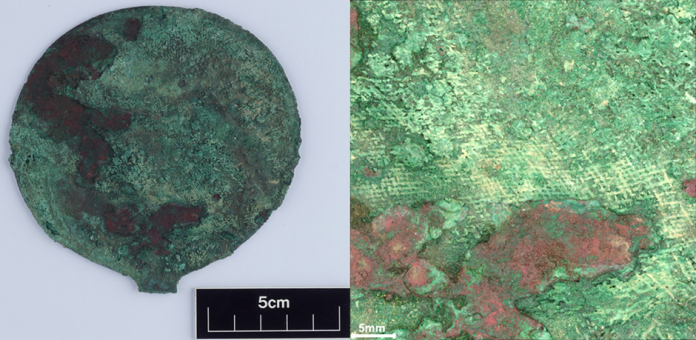The Archaeology Department of the University of Liverpool has carried out two ground-breaking projects that have improved our understanding of how human culture developed in ancient times. Playing a key role in that research has been the KEYENCE VHX-7000 Series Digital Microscope, the world’s first 4K ultra-high accuracy microscope.
Elizabeth Thomas, an Archaeology PhD student at the university, had the opportunity to use the KEYENCE digital microscope when conducting research for her Masters and PhD. This work involved analysing Egyptian mirrors, many of them dating back to the Middle Kingdom era of the 12th Dynasty.
The VHX-7000 was used to gather information on the different kinds of corrosion found on the mirrors. Elizabeth felt it was important to see the different layers in the mirrors and how they were made, which was not possible using a scanning electron microscope (SEM) where image delivery was in grayscale.
Essential for Elizabeth’s work was the ability to create colour images and show extremely high levels of detail at high magnification settings. Having access to full-colour high magnification images was vital to ascertain how an artifact might have looked in its original state.
Elizabeth found that another benefit of using the KEYENCE digital microscope was that it could display textiles that had been preserved in corrosion. The VHX-7000 was able to capture images of these textiles for subsequent examination by an expert.
In addition, the digital microscope made stitching images a straightforward process, whereas an SEM would require image stitching to be carried out manually using separate software. The VHX-7000 also eliminated the need for preparing samples – an SEM requiring them to be secured on to a stand – while the measurement capabilities of the KEYENCE system saved Elizabeth a considerable amount of time.
“There are many advantages to using the VHX-7000,” says Elizabeth, “and it represents a massive jump in functionality from any previous digital microscopes I’ve used. For example, the flexibility of being able to move the unit’s fully-integrated head around a sample is invaluable. It means that just by tilting the head, it’s possible to create multiple views of the same sample.”
In a second project involving the University of Liverpool’s Archaeology Department, the VHX-7000 was used to carry out laboratory-based archaeobotanical analysis of delicate and highly valuable charred plant macrofossils. Some 966 non-wood items and 440 wood charcoals were retrieved from excavations at the Palegawra cave, a Zarzian occupation site in north-eastern Iraq.
This culture dates from the late Palaeolithic and Mesolithic eras and it has been possible to discover a great deal of new information about it by studying well-preserved botanical and faunal remains. This research was carried out by the Eastern Fertile Crescent (EFEC) project, a collaboration between the University of Liverpool and the Sulaymaniyah Directorate of Antiquities and Heritage.
For the Full-Length case study, click here: (registration required) www.keyence.co.uk/landing/lpc/vh202010602cs_vf.jsp
BAJR BONUS!
Email product.updates@keyence.co.uk and mention BAJR to receive a virtual or on-site demo with a specialist, if organised this can include your own samples. All cost and obligation free of course.


